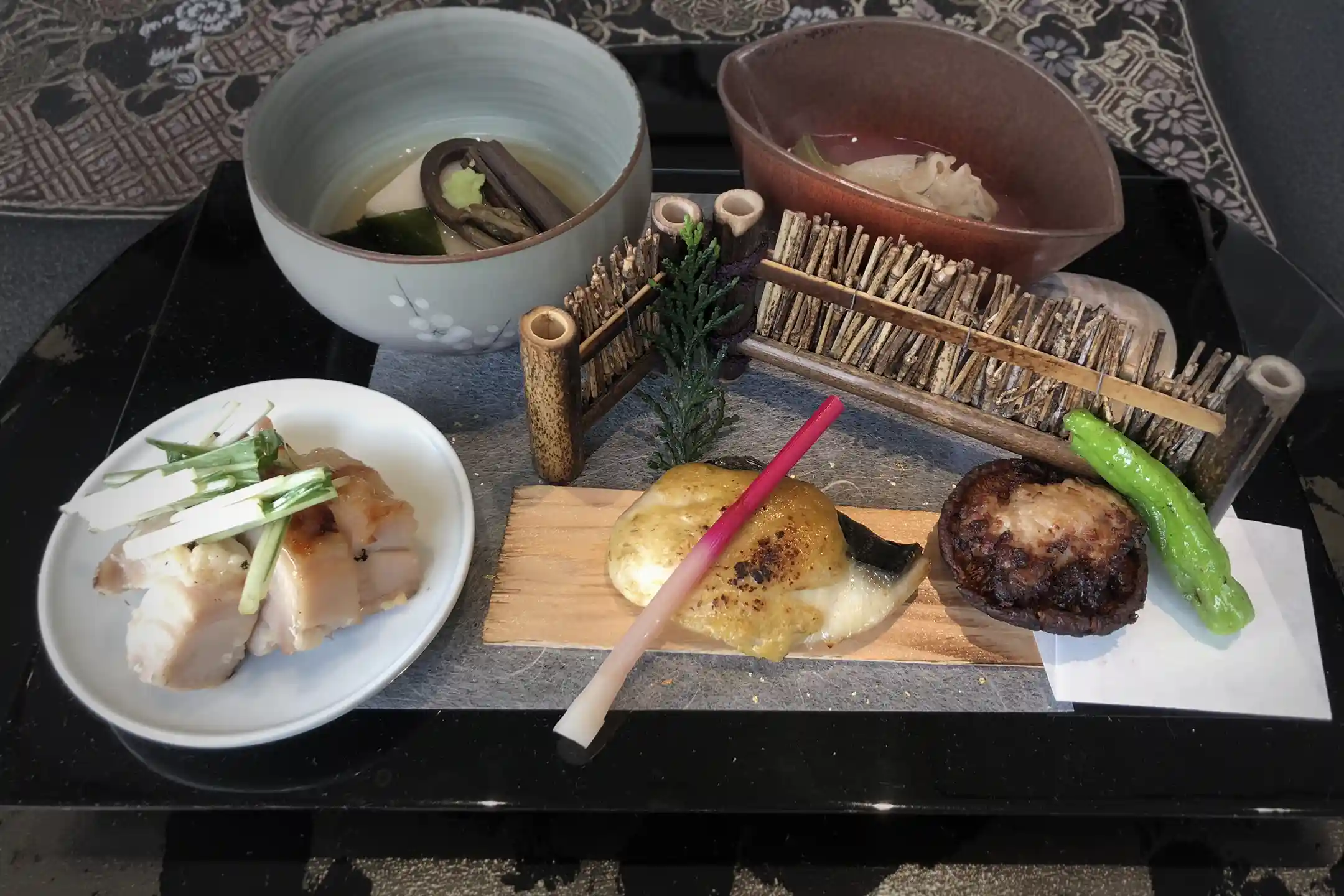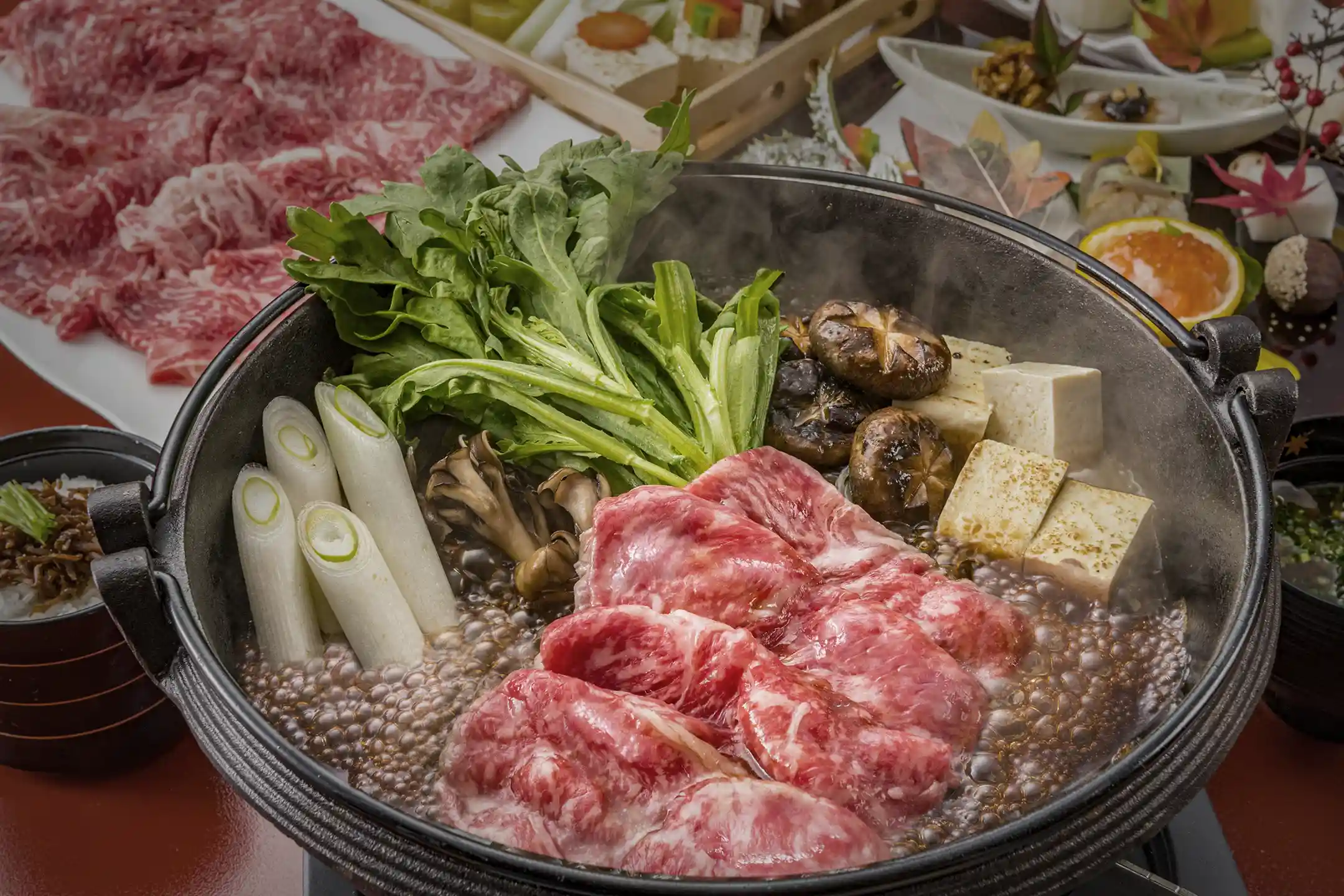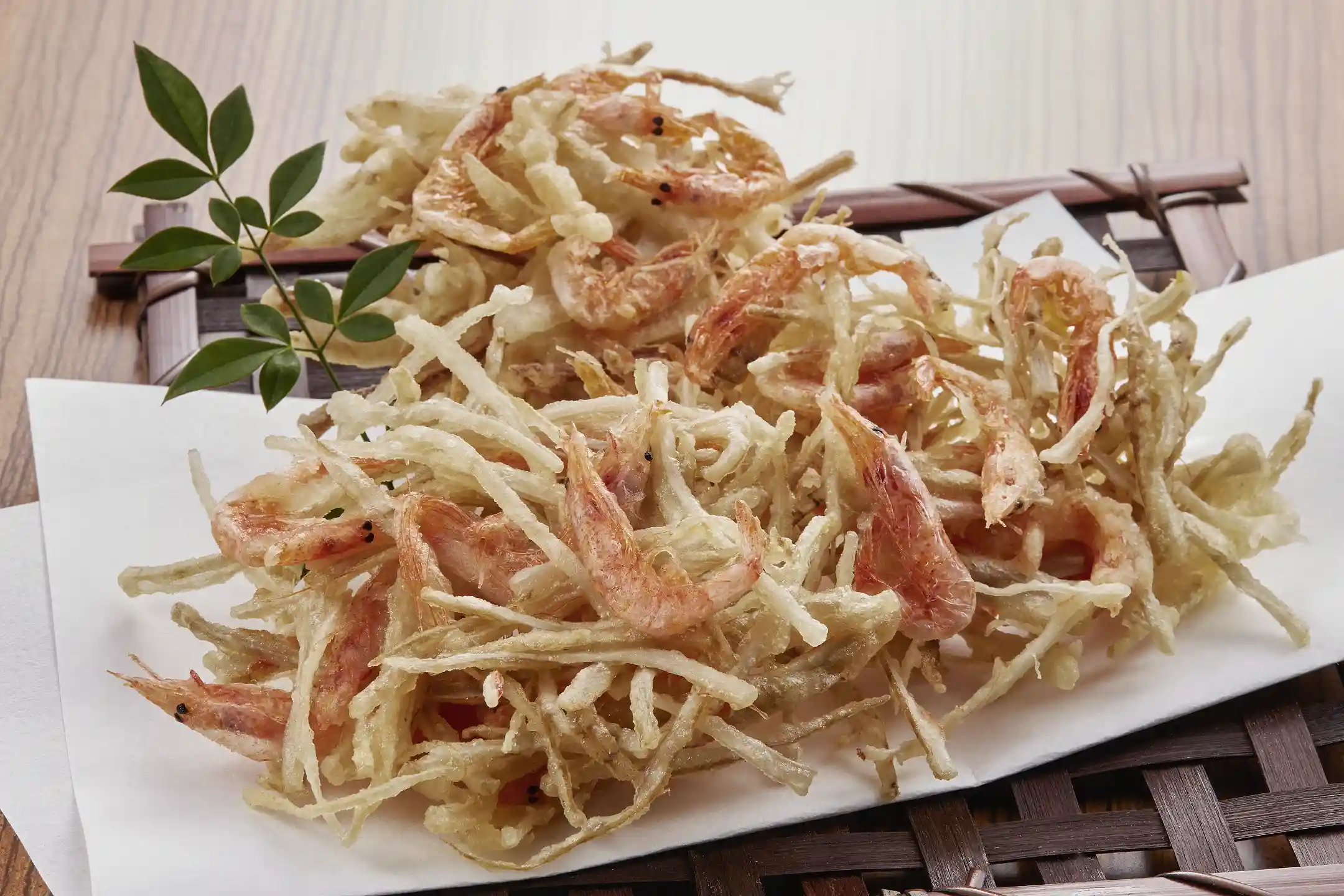Japanese food culture is far more than the simple act of eating; it is a total work of art in which history, nature, spirituality, and aesthetics intertwine. From the meat‑free shōjin ryōri that arose from ancient Buddhist precepts to the tea ceremony’s spirit of omotenashi (wholehearted hospitality); from regional specialties shaped by distinct climates to today’s commitments to sustainability and cutting‑edge technology, countless influences continuously merge and evolve here.
Where many Western food traditions emphasize dynamism and abundant protein, Japanese cuisine shines a spotlight on ingredients, the seasons, and thoughtful consideration for everyone at the dining table. In this article, you will unpack the historical foundations and regional variations of Japanese food while discovering modern innovations and hands‑on ways to experience them. Prepare to be amazed by a deeply rooted culture of meticulous care and empathy that often leaves overseas guests exclaiming, “I had no idea it was this thorough!”
The History and Tradition of Japanese Food Culture—Tracing the Roots of Washoku
Origins and Development of Washoku: From Buddhist Shōjin Cuisine to Edo‑Period Popular Culture
Japanese food culture took a decisive turn in the 6th century, when Buddhism’s arrival brought an emphasis on shōjin ryōri, a cuisine that avoids meat. In 675 CE Emperor Tenmu issued an edict banning the consumption of certain animals (*1), reinforcing a social climate that discouraged meat‑eating.
Compared with Western diets in which meat is an everyday staple, this pivot embedded a deep respect for nature and living beings at Japan’s culinary core. During the Kamakura period, Zen monks returning from China refined shōjin techniques, drawing out umami without animal products (*2). The Muromachi era’s warrior class perfected honzen banquets, and the formal tea gatherings of the time produced kaiseki cuisine—dishes steeped in aesthetics and spirituality alike (*3)(*4).
Rather than focusing on appearance alone, Japanese cooks valued flavor, seasonality, and hospitality—traits that set the cuisine apart from the often more utilitarian approach found in the West. By the Edo period, a stable society fostered the blossoming of merchant culture, and popular fare such as sushi, soba, and tempura took off (*4). Street stalls and casual teahouses made good food widely accessible (*5). The result is a unique culinary matrix that blends shōjin purity, formal omotenashi, and down‑to‑earth comfort—a legacy that endures today.
Note: Shōjin Ryōri—dishes prepared without animal flesh, centered on vegetables, grains, seaweeds, and legumes in line with Buddhist precepts.

Aesthetic Values in Tea Ceremony and Kaiseki: Hospitality, Seasonal Nuance, and the Art of Vessels
Within the worlds of tea and kaiseki, an unwavering commitment to “cherishing the guest through meticulous care” takes center stage. Everything—from sweeping the tea room and hanging the calligraphy scroll to selecting bowls—functions as a considerate gesture (*6). Western “hospitality” certainly exists, yet Japan’s version places special weight on harmony with nature. Imagine cherry motifs in spring, cooling glassware in summer—tiny choices that create an immersive seasonal atmosphere.
%20in%20the%20tea%20ceremony.webp?width=750&height=500&name=The%20spirit%20of%20omotenashi%20(Japanese%20hospitality)%20in%20the%20tea%20ceremony.webp)
Kaiseki, built around the minimalist one‑soup‑three‑dishes framework, highlights seasonal ingredients served immediately after cooking (*7). Diners savor not only taste but also plates, presentation, and the philosophy behind them (*8). While Western fine dining often celebrates size or opulence, kaiseki invites you to relish delicacy and deliberate “space on the plate.”
Regional Diversity That Nurtures Japanese Food Culture
Japan stretches far north to south, and drastic differences in climate and terrain give rise to rich variations in flavor, cooking methods, and even plate styles. Regional identity shows up as clearly in soup stock or soy sauce as it does in local specialties, so the farther you travel, the more facets of Japan you’ll taste.
Kanto vs. Kansai—Contrasting Stocks and Soy Sauces
Kanto embraces bold katsuobushi stock and full‑bodied dark soy, while Kansai highlights kombu stock and light soy that lets ingredients shine (*1)(*2). Historically, Edo (Tokyo) had limited access to Hokkaido kombu, whereas Kyoto and Osaka did not—proof that geography and logistics shape cuisine. Europe’s cheese‑and‑wine terroirs offer a parallel, yet Japan’s identity even comes through in the flavor base itself.
Local Dishes and Landscapes Across Japan
Cold northern regions favor fermented foods and dried fish, whereas the subtropical Southwest Islands incorporate island vegetables and pork—just two examples of countless localized traditions (*3). Each area’s ingenuity and heritage present living lessons; every bite on your journey becomes a window into the local way of life.
.webp?width=750&height=500&name=A%20dinner%20gathering%20with%20local%20sake%20and%20fresh%20local%20fish%20at%20a%20traditional%20Japanese%20inn%20(ryokan).webp)
Plates and Presentation—Regional Design Aesthetics
From the rustic warmth of Mashiko pottery to the vibrant elegance of Arita and Kutani porcelain, regional craftsmanship turns plates into artworks (*4). Western gastronomy values tableware, too, yet in Japan the vessel often feels as important as the dish—frequently evoking the season in its very design.

Innovation and Sustainability in Modern Times
While honoring tradition, Japanese food culture eagerly adopts new ideas. From eco‑conscious farming to molecular gastronomy, Japan blends ancestral wisdom with cutting‑edge know‑how in truly flexible ways.
Chisan‑Chishō and Organic Farming
The practice of consuming locally grown produce—chisan‑chishō—reduces transport emissions and stimulates regional economies. Western local‑food movements are similar, yet Japan’s long‑standing customs of neighborly cooperation make the concept feel second nature. Promoting organic methods not only safeguards the environment and food safety but also revives pre‑industrial farming techniques (*6)(*7)(*8). Japan’s progress is not a linear march toward “high tech” but a dialogue between old and new.
Cutting‑Edge Techniques Expanding Culinary Possibilities
Molecular gastronomy, 3‑D food printing, and more have gained momentum in recent years. At the Gastronomy Innovation Campus in Tokyo’s Yaesu district (*9), researchers and chefs from around the globe map out future dining where advanced science meets refined Japanese aesthetics—foreshadowing brand‑new styles of Washoku.
How to Immerse Yourself in Japanese Food Culture—Learning and Doing
Japanese culture rewards experience over theory, and cuisine is no exception. For travelers, handling ingredients, following cooking steps, and exploring markets provide firsthand insight into the country’s famed precision and history.
Japanese Cooking Classes and Wagashi Workshops
From sushi and tempura to everyday home cooking, classes—many in English—always start with meticulous prep work and dashi making (*2)(*3). You may catch yourself thinking, “I never realized so much care went into this!” Wagashi workshops showcase artisans sculpting seasonal motifs with breathtaking finesse (*4). More than pastries, these sweets feel like edible art, offering creativity distinct from Western patisserie.

Market Tours and Artisan Encounters
Tokyo’s Tsukiji Outer Market and Kyoto’s Nishiki Market brim with age‑old specialty shops (*5)(*6). Guided English tours reveal the history and business customs behind each stall, turning a shopping trip into a cultural deep dive. Popular packages even let you buy ingredients on‑site and cook them in class (*7), linking farm, kitchen, and table in one seamless adventure.
Elegant Venues and Essential Dining Etiquette
In washoku, atmosphere and behavior are integral to the meal. Like Western fine dining, Japan has its formal settings and etiquette, but here the space often reflects seasonal beauty and traditional artistry, while every gesture—how you hold a bowl or chopsticks—carries cultural meaning.
Choosing Refined Restaurants and Cafés
Across Japan you will find cafés crafted from renovated townhouses, legendary high‑end restaurants, and more. Some preserve historic gardens so you can dine amid blossoms all year round (*1). Increasingly, chefs incorporate overseas training to craft original blends of Japanese and Western styles (*2)(*3).
For peace of mind, confirm English support when booking; many venues still offer only Japanese menus, though translated menus and apps are becoming common. A quick inquiry beforehand shows mutual respect.

Basic Washoku Manners You’ll Want to Know
Japanese etiquette centers on consideration for others (*4). Ask staff or nearby diners if you’re unsure—they will gladly help.
- Chopsticks and Taboos
Hold chopsticks properly, avoid passing food from one pair of chopsticks to another, and rest your chopsticks correctly; always aim their tips away from people (*5). - Holding Bowls Correctly
Lift the rice bowl to your mouth rather than bending down to the table—a practice opposite to that in many Western settings (*6). - Finish As Much As Possible
Expressions like itadakimasu and gochisō‑sama embody gratitude for food and its makers, so try not to leave food behind (*7). - No Tipping
Service charges are usually included or tipping is simply unnecessary. Express thanks with words and a smile. - Pay at the Register
Most restaurants settle the bill at the cashier rather than the table, and following the staff’s lead is considered courteous.
Conclusion
Japanese food culture stands on centuries of Buddhist shōjin discipline, tea‑ceremony hospitality, Edo‑period street delights, and a kaleidoscope of regional dishes. The spirit of omotenashi permeates every plate, utensil, and gesture, while modern sustainability and technology push the horizon ever wider.
From a Western viewpoint, Japan’s intricate “rules” can seem daunting. Yet the deeper you explore the care for nature, respect for others, and celebration of the moment, the more captivating the experience becomes. By joining a cooking class or market tour, you engage in the full cycle of making, tasting, and feeling food within its cultural context.
Japanese cuisine marries diversity with refinement like no other. If you plan to visit, venture beyond flavor alone and delve into the philosophy and stories behind each bite—you’ll return home with richer memories and fresh insights waiting to be savored.
Author Bio






/Kazunoko%20Matsumae-zuke%20(Herring%20Roe%20and%20Seafood%20Pickles).webp)